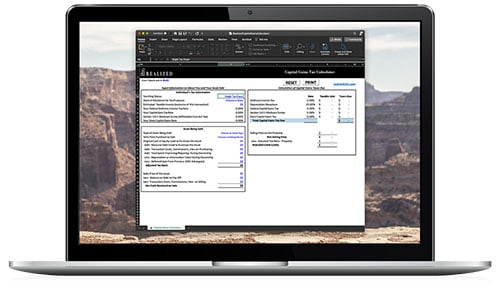 The IRS offers a variety of instructions concerning gains or losses resulting from the sale of capital assets. These include capital gains tax rates, short-term versus long-term capital gains, and carry forwards/carry overs.
The IRS offers a variety of instructions concerning gains or losses resulting from the sale of capital assets. These include capital gains tax rates, short-term versus long-term capital gains, and carry forwards/carry overs.
So, how long can capital gains be carried forward? Capital gains can’t be carried forward at all. But capital losses can be carried forward.
Gains versus Losses
According to the IRS, about everything you use and own for personal or investment purposes is a capital asset. This includes your house, your furniture, stocks and bonds, or other investment real estate. When you sell that asset, the difference between your original purpose price and costs you made for improvement (the adjusted basis) and the amount you received is either a capital gain or capital loss.
The IRS allows capital losses to be carried forward. Specifically, net capital losses – the amount that total capital losses exceed total capital gains – can be carried forward. But these losses have a maximum deduction – you can only deduct a maximum of $3,000 in a tax year. Anything above that figure can be carried forward into future tax years and used against upcoming capital gains until the remaining amount is exhausted.
For example, tax-loss harvesting involves selling securities for a loss, then using those losses to offset gains from other investments and income. Those losses can be carried over to offset gains in the future.
But you can’t carry over, or carry forward, capital gains. You must report 100% of those gains in the year in which they’re realized.
One “Carry Forward” Exception
But if you realize a capital gain on the sale of real estate used for business or investment purposes, you could defer taxes on those gains through a 1031 exchange. Specifically, you’d be “swapping” those gains into a property of equal or greater value than the one you wish to dispose of.
You can continue deferring capital gains taxes through additional 1031 exchanges ad infinitum. However, a 1031 exchange isn’t necessarily a “carry forward.” Rather, it’s a method of capital gains tax deferral.
Knowing the Difference
When selling your capital asset, it’s important to understand the difference between losses and gains and their tax treatments. Awareness of these differences can reduce surprises that might occur at tax time.
This material is for general information and educational purposes only. Information is based on data gathered from what we believe are reliable sources. It is not guaranteed as to accuracy, does not purport to be complete and is not intended to be used as a primary basis for investment decisions. It should also not be construed as advice, meeting the particular investment needs of any investor.
Costs associated with a 1031 transaction may impact investor’s returns and may outweigh the tax benefits. An unfavorable tax ruling may cancel deferral of capital gains and result in immediate tax liabilities.
Realized does not provide tax or legal advice. This material is not a substitute for seeking the advice of a qualified professional for your individual situation.


